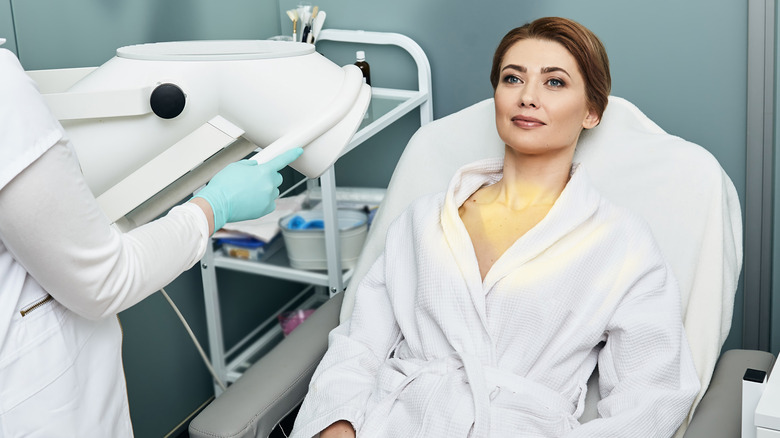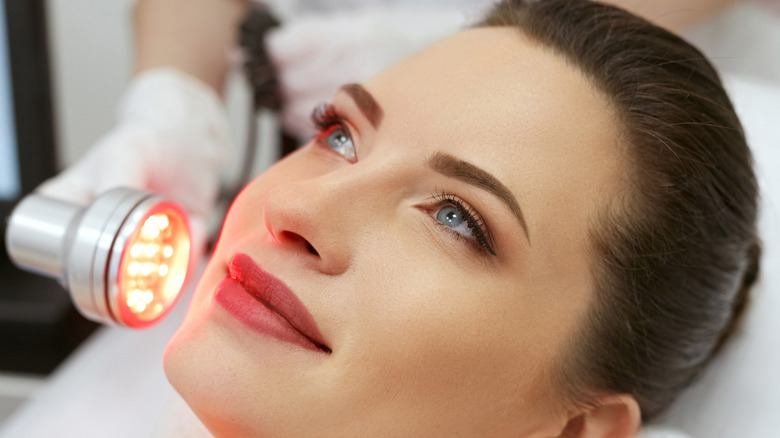What To Expect When Getting Light Therapy For Acne
Light therapy is a type of acne treatment that involves using artificial light to treat breakouts on a cellular level. According to Byrdie, blue light is the most effective type of light therapy for acne. That's because it uses a three-pronged approach to target and eliminate acne. For instance, one of the ways blue light therapy treats acne is by triggering a chemical reaction on the skin, which helps produce antibacterial properties.
"[Acne-causing bacteria] produces a protein called porphyrins, and when this protein is exposed to and absorbs blue light, a chemical reaction ensues, killing the bacteria," Dr. Marnie Nussbaum, a board-certified dermatologist, told Byrdie. In addition, blue light therapy can also help regulate sebum production and improve inflammation, unclogging your pores and reducing any redness on the skin. Although blue light therapy tends to be more effective, red light therapy can also help relieve inflammation and speed up the healing process. As a result, red light therapy is often used in conjunction with blue light therapy.
Light therapy can make your skin sensitive
If you're interested in using light therapy to help treat your acne, there are a few things you can expect to happen during your first session. Regardless of whether you undergo blue or red light therapy, each session will likely last between 15 to 30 minutes (via Healthline). During this time, your head will be placed in a device that will hold it in place. A nurse or dermatologist will apply pulses from a light therapy device to your face in a circular motion.
Afterward, your skin may look pink or red and it might even start peeling. This is normal, but it might mean you'll need to temporarily alter your skincare routine. Since light therapy can make your skin sensitive, you'll want to avoid using face scrubs, exfoliants, or products containing vitamin A. As an added precaution, dermatologists also recommend wearing sunscreen during the day until your skin fully heals. Light therapy treatments usually last four-to-six weeks, so it's best to regularly apply sunscreen to your face until your treatments are over.


